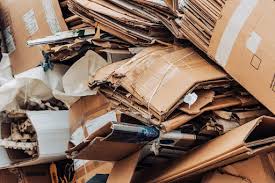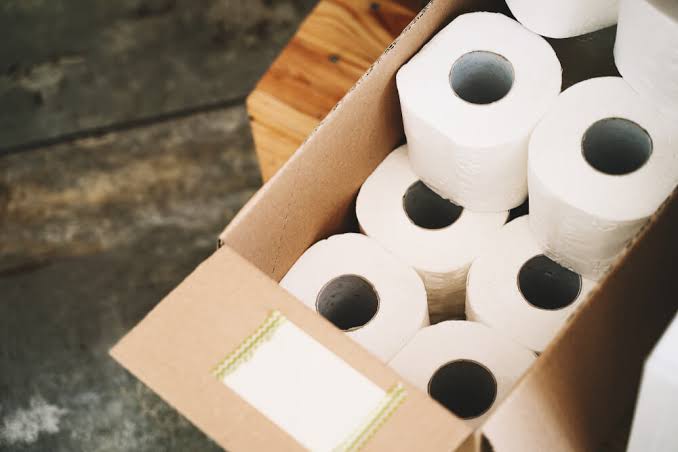Turning paper wastes into tissue paper is a super cool thing we can do with paper waste! Instead of just throwing it away, we can change it into tissue paper. Tissue paper is the soft, thin paper we use for wiping and cleaning. So, by converting paper waste into tissue paper, we’re doing something awesome for the environment and making something useful too.
Here’s how it works. First, we collect all the paper waste, like old newspapers, used notebooks, and any other paper we don’t need anymore. Then, we sort it out to make sure we only use paper that’s clean and doesn’t have any weird stuff on it.
Next, we break down the paper into tiny pieces. It’s like turning big puzzles into small ones! This process is called pulping. We mix the tiny paper pieces with water to make a mushy mixture called pulp. It’s like making paper soup!
After that, we remove any bits of stuff that we don’t want in our tissue paper soup, like bits of plastic or metal. We want our tissue paper to be clean and safe to use.
Now, it’s time to make the paper! We pour the pulp mixture onto a big flat screen called a mold. The water drains away, leaving behind a thin layer of pulp on the mold. We press it down to squeeze out even more water.
Once the pulp dries up, we peel it off the mold. Ta-da! We have a sheet of tissue paper! But wait, we’re not done yet. We need to make sure it’s nice and smooth.
We run the tissue paper through big rollers that press and flatten it. This makes it super soft and smooth, perfect for wiping your nose or cleaning up spills.
Finally, we cut the big sheets of tissue paper into smaller pieces, like the ones you see in tissue boxes. And there you have it – tissue paper made from paper waste!
Isn’t that amazing? Instead of letting paper waste pile up in landfills, we can give it a new life as something useful. Plus, making tissue paper from paper waste helps to save trees because we don’t need to cut down as many trees to make new paper. It’s a win-win for the environment and for us!
Read Also: How to Choose the Right Trash Service for Your Needs
Types of Recyclable Paper Wastes and their Uses

here are some common types of recyclable paper wastes and their uses:
1. Newspapers: Newspapers are often used for packaging, wrapping fragile items, or even as a material for arts and crafts projects. The paper fibers in newspapers are also suitable for making new newspaper print.
2. Magazines: Like newspapers, magazines can be used for packaging or crafts. The glossy paper used in magazines can also be recycled to make new magazines or other paper products.
3. Cardboard: Cardboard boxes and packaging are highly recyclable and are commonly used to make new cardboard boxes, paperboard, or even recycled paper bags. They are also used in construction for insulation or as a material for making furniture.
4. Office Paper: Paper waste from offices, such as used printer paper or shredded documents, can be recycled to produce new office paper. It’s important to ensure sensitive information is properly shredded before recycling.
5. Junk Mail: Unsolicited mail, flyers, and advertisements can all be recycled. They can be pulped and turned into various paper products, including new mail or packaging materials.
6. Paper Packaging: Any paper-based packaging, such as cereal boxes, food cartons, or paper bags, can be recycled to create new packaging materials or other paper products.
7. Books: Old or unwanted books can be recycled into new paper products. If the books are still in good condition, they can also be donated or resold for reuse.
8. Tissue Paper: Used tissue paper and paper towels can be recycled to produce new tissue paper products. The fibers in tissue paper are typically shorter and weaker, so the recycled tissue paper may not be as strong as virgin tissue paper but is still suitable for many uses.
It’s important to remember to separate paper waste from other types of waste and to follow local recycling guidelines to ensure proper recycling practices.
How to Convert Paper Wastes into Tissue Paper
Converting paper waste into tissue paper is a fascinating process that involves several steps. Here’s a simplified guide on how it’s done:
1. Collection: Start by collecting paper waste from various sources, such as newspapers, magazines, office paper, and cardboard boxes. Make sure the paper is clean and free from contaminants like food residue or dirt.
2. Sorting: Separate the collected paper waste into different categories based on the type of paper. This helps ensure that only suitable paper materials are used in the recycling process.
3. Pulping: Next, the paper waste is shredded or broken down into small pieces. These pieces are then mixed with water to create a pulp mixture. This process is called pulping and helps separate the paper fibers from each other.
4. Cleaning: The pulp mixture is passed through screens to remove any unwanted materials, such as staples, plastic, or other non-paper items. This step ensures that the final tissue paper product is clean and free from impurities.
5. Bleaching (Optional): Depending on the desired quality and appearance of the tissue paper, the pulp may undergo a bleaching process to lighten the color of the fibers. This step is optional and can be skipped if unbleached tissue paper is preferred.
6. Forming: The cleaned and refined pulp is then poured onto a mesh screen or conveyor belt. As water drains away, the pulp forms a thin layer on the surface, resembling a sheet of paper.
7. Pressing: The formed pulp sheet is pressed between rollers to remove excess water and compress the fibers together. This helps create a denser and smoother tissue paper product.
8. Drying: The pressed pulp sheet is transferred to a drying section where it is exposed to heat or air to remove any remaining moisture. This step completes the transformation of the pulp into solid tissue paper.
9. Cutting and Packaging: Once dried, the tissue paper is cut into individual sheets or rolls according to the desired size and packaging requirements. It is then packaged and prepared for distribution to consumers.
By following these steps, paper waste can be effectively converted into tissue paper, providing a sustainable solution for recycling and reducing environmental impact.
The Benefits of Converting Paper Wastes into Tissue Paper

Converting paper wastes into tissue paper offers several benefits for both the environment and society:
1. Waste Reduction: By recycling paper waste into tissue paper, we reduce the amount of paper ending up in landfills. This helps alleviate the burden on landfill sites and reduces the need for new landfills, contributing to a cleaner and healthier environment.
2. Resource Conservation: Recycling paper waste conserves valuable natural resources, such as trees and water. Instead of relying solely on virgin wood pulp, recycled paper fibers can be used to produce tissue paper, reducing the demand for fresh raw materials and helping to preserve forests.
3. Energy Savings: The production of tissue paper from recycled paper waste generally requires less energy compared to producing paper from virgin fibers. This is because the pulping and refining processes for recycled paper are less intensive, leading to lower energy consumption and reduced greenhouse gas emissions.
4. Water Conservation: Recycling paper waste also conserves water resources. The pulping process for recycled paper typically requires less water compared to processing virgin wood pulp, helping to alleviate water scarcity issues and minimize the environmental impact of paper production.
5. Reduced Pollution: Recycling paper waste helps reduce pollution associated with paper production. By avoiding the need to cut down trees and reducing energy consumption and emissions, converting paper waste into tissue paper helps mitigate air and water pollution, contributing to cleaner air and water for communities.
6. Job Creation: The recycling industry creates employment opportunities in various sectors, including collection, sorting, processing, and manufacturing. By supporting recycling initiatives, the conversion of paper waste into tissue paper contributes to job creation and economic growth in local communities.
7. Product Diversity: Tissue paper made from recycled paper waste offers a sustainable alternative to conventional tissue paper products. It can be used for various purposes, including personal hygiene, household cleaning, and packaging, providing consumers with environmentally friendly options.
8. Environmental Awareness: Promoting the conversion of paper waste into tissue paper raises awareness about the importance of recycling and sustainable resource management. By encouraging individuals and businesses to participate in recycling programs, we foster a culture of environmental stewardship and responsibility.
Overall, converting paper wastes into tissue paper offers numerous environmental, social, and economic benefits, contributing to a more sustainable and resilient society.
The Uses and Benefits of Recycled Tissue Paper and their Uses
Recycled tissue paper offers a range of uses and benefits, making it a versatile and environmentally friendly option for consumers and businesses alike:
1. Personal Hygiene: Recycled tissue paper is commonly used for personal hygiene purposes, such as facial tissues, toilet paper, and paper towels. These products provide softness and absorbency while helping to reduce environmental impact by utilizing recycled paper fibers.
2. Household Cleaning: Recycled tissue paper is suitable for various household cleaning tasks, including wiping surfaces, absorbing spills, and drying hands. Its absorbent qualities make it effective for cleaning while its eco-friendly credentials appeal to environmentally conscious consumers.
3. Packaging Material: Recycled tissue paper can be used as packaging material for protecting fragile items during shipping or storage. Its cushioning properties help prevent damage to goods while reducing the need for single-use plastic or other non-biodegradable packaging materials.
4. Arts and Crafts: Recycled tissue paper is a popular choice for arts and crafts projects due to its versatility and availability in various colors and textures. It can be used for collage, paper mache, gift wrapping, and other creative endeavors, providing an eco-friendly alternative to conventional craft materials.
5. Environmental Benefits: Using recycled tissue paper helps conserve natural resources by reducing the demand for virgin wood pulp. It also helps divert paper waste from landfills, contributing to waste reduction efforts and mitigating environmental pollution.
6. Energy and Water Savings: The production of recycled tissue paper typically requires less energy and water compared to producing paper from virgin fibers. By using recycled paper fibers, the environmental impact of paper production is minimized, leading to energy and water savings and lower greenhouse gas emissions.
7. Support for Recycling Initiatives: Choosing products made from recycled tissue paper supports recycling initiatives and encourages the development of sustainable supply chains. By promoting the use of recycled materials, consumers and businesses contribute to the circular economy and help create a more resource-efficient society.
8. Corporate Social Responsibility: Businesses that incorporate recycled tissue paper into their operations demonstrate a commitment to environmental sustainability and corporate social responsibility. By using eco-friendly products, companies can enhance their brand reputation and appeal to environmentally conscious consumers.
Overall, recycled tissue paper offers a range of uses and benefits, including personal hygiene, household cleaning, packaging, arts and crafts, environmental conservation, and support for recycling initiatives. By choosing products made from recycled tissue paper, consumers and businesses can contribute to a more sustainable future while enjoying the practical and eco-friendly qualities of these products.
Read Also: Tips for Maintaining a Clean Garbage Disposal
The Challenges of Converting Paper Wastes into Tissue Paper and their Solutions

Converting paper wastes into tissue paper presents several challenges, but with innovative solutions, these challenges can be addressed effectively:
1. Contamination: One of the main challenges in recycling paper waste into tissue paper is contamination. Paper waste may contain non-paper materials like plastics, metals, or food residues, which can affect the quality of the final product.
Solution: Implementing strict sorting and cleaning processes can help minimize contamination. Advanced sorting technologies, such as optical scanners and air classifiers, can efficiently separate paper from contaminants. Additionally, educating consumers about proper recycling practices can help reduce contamination at the source.
2. Quality Control: Maintaining consistent quality in recycled tissue paper production can be challenging due to variations in paper waste composition and quality. Inconsistent fiber lengths or impurities may affect the strength, softness, and appearance of the tissue paper.
Solution: Investing in quality control measures, such as automated inspection systems and rigorous testing protocols, can help ensure consistent product quality. By monitoring and adjusting production parameters, manufacturers can optimize the recycling process to produce tissue paper that meets industry standards.
3. Pulp Processing: Processing paper waste into pulp requires significant energy, water, and chemical inputs. Traditional pulping methods may be resource-intensive and environmentally impactful, posing challenges in terms of sustainability.
Solution: Adopting more sustainable pulping technologies, such as recycled pulping or enzymatic pulping, can reduce energy and water consumption while minimizing chemical usage. Additionally, integrating energy-efficient equipment and optimizing process efficiency can further enhance the sustainability of pulp processing operations.
4. Market Demand: Fluctuations in market demand for recycled tissue paper products can pose challenges for manufacturers, particularly in terms of production planning and inventory management.
Solution: Diversifying product offerings and exploring new markets can help mitigate the impact of market fluctuations. Building strong partnerships with retailers, distributors, and consumers can also provide valuable insights into market trends and preferences, allowing manufacturers to adapt quickly to changing demands.
5. Infrastructure and Logistics: Inadequate recycling infrastructure and logistical challenges, such as transportation and storage, can hinder the efficient collection and processing of paper waste for tissue paper production.
Solution: Investing in infrastructure development and optimizing logistics networks can improve the efficiency and effectiveness of paper waste recycling operations. Collaborating with local municipalities, waste management companies, and recycling facilities can help streamline collection and processing processes, reducing costs and environmental impacts.
By addressing these challenges through technological innovation, process optimization, and collaboration across the value chain, the conversion of paper wastes into tissue paper can become more efficient, sustainable, and economically viable.
Frequently Asked Questions (FAQs) About How to Convert Paper Wastes into Tissue Paper
1. Q: What types of paper waste can be used to make tissue paper?
A: Various types of paper waste can be used, including newspapers, magazines, office paper, cardboard boxes, junk mail, and paper packaging.
2. Q: How is paper waste converted into tissue paper?
A: The process involves collecting, sorting, pulping, cleaning, forming, pressing, drying, cutting, and packaging the paper waste to create tissue paper. It undergoes several steps to break down the paper fibers, remove contaminants, and form them into thin sheets or rolls.
3. Q: Is recycled tissue paper as good as tissue paper made from virgin fibers?
A: Recycled tissue paper can be just as good in terms of softness and absorbency as tissue paper made from virgin fibers. However, the quality may vary depending on factors such as the quality of the recycled paper fibers and the manufacturing process.
4. Q: What are the benefits of converting paper wastes into tissue paper?
A: The benefits include waste reduction, resource conservation, energy and water savings, reduced pollution, job creation, product diversity, environmental awareness, and support for recycling initiatives.
5. Q: Are there any challenges in converting paper wastes into tissue paper?
A: Yes, some challenges include contamination, quality control, pulp processing, market demand fluctuations, and infrastructure and logistics issues. However, these challenges can be addressed through technological innovation, process optimization, and collaboration.
6. Q: How can individuals contribute to the conversion of paper wastes into tissue paper?
A: Individuals can contribute by recycling paper waste at home or in their workplaces, following proper recycling guidelines, minimizing contamination, and supporting businesses that use recycled tissue paper products.
7. Q: Is recycled tissue paper environmentally friendly?
A: Yes, recycled tissue paper is considered environmentally friendly because it helps conserve natural resources, reduce waste, and minimize environmental impact compared to tissue paper made from virgin fibers.
Read Also: Best Flowers for Honey Bees

